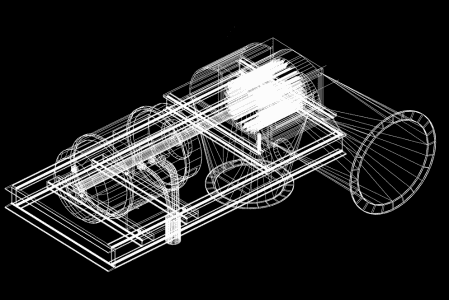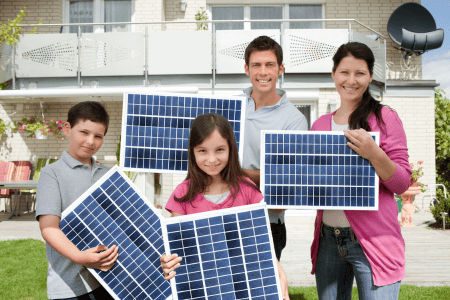7 Unique Ways to Use A Portable Water Turbine
Harnessing Power on the Go: A Deep Dive into Portable Water Turbines
Hey there! Let’s discuss something cool – 7 Unique ways to use a portable water turbine. These little gadgets are miniature power plants that you can carry around. They work by harnessing the energy from moving water, turning it into electricity you can use on the go. In a world constantly striving for sustainability and renewable energy, these portable powerhouses are making a splash.
Brief Overview of Portable Water Turbines
If you’re new to this concept, don’t worry, it’s pretty straightforward. Portable water turbines are compact, lightweight devices that generate electricity from flowing water. With one of these nifty machines, you can convert a gentle stream or even a fast-flowing river into your power supply.
Importance of Portable Water Turbines in Today’s Renewable Energy Landscape
The thing is, portable water turbines aren’t just convenient – they’re a severe game-changer of renewable energy. They provide a clean, green alternative to traditional power sources, helping us reduce our carbon footprint. And given the mounting concerns about climate change, that’s a big deal.
1. Working Principle of Portable Water Turbines
Detailed Explanation of How Portable Water Turbines Function
Let’s dive a bit deeper into how these bad boys work. Picture a miniaturized version of the big turbines you see in dams. The portable water turbine sits in the flow of water. The moving water spins the turbine, and voila! That kinetic energy is converted into usable electricity.

Differences Between Stationary and Portable Water Turbine Operations
The key difference between stationary and portable turbines is their mobility and scale. While stationary turbines like Kaplan, Francis, and Pelton in hydropower plants generate massive amounts of power, their portable cousins are designed for personal use. They’re compact, easy to set up, and perfect for outdoor adventures or emergency power supply.
2. Key Manufacturers of Portable Water Turbines
Introduction to Leading Manufacturers in the Portable Water Turbine Industry
Now, let’s chat about the folks who make these devices. Some of the key players include Gugler Water Turbines GmbH and GE Renewable Energy.
Highlighting the Notable Products and Innovations from Each Manufacturer
Gugler, for example, is renowned for its range of innovative turbines that cater to different needs. On the other hand, GE Renewable Energy is making waves with its comprehensive suite of green energy solutions, including portable water turbines.
3. Types of Portable Water Turbines
Exploring the Different Types of Portable Water Turbines Available
Like their stationary counterparts, portable water turbines come in different flavors. There’s much to choose from, from impulse turbines perfect for high head, low flow conditions to reaction turbines that work best with a steady water flow.
Discussing the Unique Features, Advantages, and Best Use Cases for Each Type
Each type of portable water turbine brings something unique to the table. For instance, the mini Kaplan turbine is an excellent choice for low-head sites with high flow rates, while the mini Pelton shines in high-head, low-flow conditions. And, of course, let’s not forget the compact Francis turbine that’s a perfect all-rounder for a wide range of water conditions.
4. Applications of Portable Water Turbines
Highlighting Various Practical Applications of Portable Water Turbines
Alright, so where can we use these portable power producers? They’re ideal for camping trips, hiking, and other outdoor adventures. Do you need to charge your phone or power a light in the middle of the
woods? No problem! You can set up your portable water turbine in a nearby stream. But that’s not all – they can also be a lifesaver during power outages, emergencies, or in remote off-grid communities.
Examples of Where and How Portable Water Turbines are Currently Being Used
Picture this – you’re in a cabin deep in the woods, far from any electrical grid. With a portable water turbine, you can keep your devices charged and lights on using nothing but the nearby stream. Or consider a rural community with limited access to electricity – portable water turbines can bring power to these remote areas, transforming lives and opportunities.
5. Advantages and Disadvantages of Portable Water Turbines
Discussing the Benefits of Using Portable Water Turbines, Such as Their Portability and Adaptability
So, what makes these devices so great? First, they’re portable – you can carry a power source in your backpack. They’re also adaptable, able to work with different types of water flow. And let’s not forget that they’re a green energy solution, harnessing the natural power of moving water without emitting harmful pollutants.
Covering the Potential Drawbacks, Like Their Dependency on Water Flow and Environmental Considerations
But hey, no solution is perfect, right? There are a few potential downsides to consider. For one, they’re dependent on water flow. If the water source dries up, the power goes out. They can also potentially disrupt aquatic habitats if not used responsibly. And while they’re more affordable than ever, there is an initial investment to consider.
6. Buying Guide for Portable Water Turbines
Key Factors to Consider When Purchasing a Portable Water Turbine
If you’re considering getting your hands on one of these gadgets, there are a few things to remember. Consider the water flow rate where you plan to use it, the portability and durability of the device, and, of course, the energy output. Make sure the turbine you choose fits your needs and the environment you’ll be using it in.
Importance of Water Flow Rate, Portability, Durability, and Energy Output in the Selection Process
Remember, not all water turbines are created equal. Some are designed for rapid rivers, while others work best in steady streams. Also, think about how portable and durable it is – if you’re hiking, you’ll need something to handle being jostled about. And, of course, check the energy output to ensure it can power your devices.
7. Future Trends in Portable Water Turbines
Overview of Emerging Trends and Advancements in the Portable Water Turbine Industry
The world of portable water turbines is constantly evolving. We’re seeing trends like enhanced efficiency, greater portability, and even smart turbines that can adjust their operations based on the water flow. These advancements are making portable water turbines more accessible and effective.
Predicting How These Trends Might Shape the Future of Portable Hydropower Solutions
I believe these trends will continue to drive the industry forward. I envision a future in which portable water turbines are as standard as solar panels for off-grid energy production. After all, the demand for clean, renewable energy isn’t going anywhere, and these devices are ideally suited to meet that demand.
FAQ
Q1. How much energy can a small water turbine produce?
The amount of energy a small or portable water turbine can produce typically varies based on the design of the turbine, the flow rate, and the height of the water drop, known as the “head.” However, most small water turbines can generate between 100 watts to a few kilowatts of power under ideal conditions.
This might not seem like much, but it can be quite significant in off-grid situations. For instance, a 500-watt turbine running for 10 hours would generate 5 kilowatt-hours (kWh) of energy, which is more than enough to charge a couple of laptops, a few dozen smartphones or power some energy-efficient lights.
Remember, these figures can vary greatly based on the turbine design specifics and the available water flow. Therefore, when considering a portable water turbine, it’s crucial to understand your power needs and the conditions you’ll use it.
Q2. How much water flow is needed to produce electricity?
The amount of water flow needed to produce electricity with a water turbine depends largely on the design of the turbine and the head or the vertical distance the water falls. Typically, larger, more traditional hydropower installations like those in dams require a large volume of water flow, measured in cubic feet per second (cfs) or cubic meters per second (m³/s).
For smaller, portable water turbines, the requirements can be much less. Even a small stream with a moderate flow can provide enough energy to generate electricity, especially if the head is significant.
For instance, a portable water turbine might operate effectively with a flow rate as low as 1-3 cubic feet per second (approximately 0.03-0.08 m³/s), especially if the vertical drop of the water is substantial.
However, the exact flow rate needed to produce a specific amount of electricity varies based on the design and efficiency of the turbine, the head, and other factors.
In any case, it’s crucial to understand your specific power needs and the characteristics of your water source when choosing a portable water turbine. It’s also good to consult a specialist or manufacturer to ensure you choose the right equipment.
Q3. Can I put a water turbine in a river?
Given the right conditions, you can place a water turbine in a river to generate electricity. Rivers are often ideal sites for water turbines due to their consistent flow. However, here’s the deal: while technically possible, you’ll need to consider a few things.
First, check with local authorities and environmental agencies. Regulations or permits might be needed to install a water turbine in a river, especially if it’s a public waterway or protected area.
Secondly, consider the environmental impact. While water turbines are a clean energy source, they can affect local aquatic ecosystems, particularly if they disrupt the natural flow of the river or the movement of marine life.
Lastly, safety and security are vital. Your water turbine must be securely installed to ensure it doesn’t pose a hazard or get swept away by the river.
If you’ve considered all these factors, a river can be an excellent power source for a water turbine. Whether using a stationary turbine for a home near the river or a portable turbine during camping trips, it’s a reliable way to tap into renewable energy.
Conclusion
Portable hydropower generators using water turbines are an innovative solution for on-the-go power generation. They’re designed to convert the kinetic energy from moving water into electricity, providing a renewable and environmentally friendly power source.
A portable hydro power generator water turbine generally consists of a compact turbine, a generator, and sometimes a built-in battery to store the generated electricity. The turbine part is designed to be placed in the flow of a stream or river. As the water flows, it turns the turbine, which then spins the generator, producing electricity.
You’ll need to find a suitable spot with a steady water flow to set up your portable hydropower generator water turbine. This could be a fast-flowing stream on a hiking trail, a river near your campsite, or even a small brook in your backyard. Once you’ve found the perfect spot, all you need to do is set up your portable turbine in the water, plug in your devices, and let mother nature do the rest.
These portable hydropower generators can charge smartphones, power lights, and run small appliances, making them an ideal companion for camping trips, hiking, and other outdoor activities. They’re also handy for emergencies, providing a reliable power source when the grid is down.
While these devices have their limitations – they need a steady flow of water to function effectively – their benefits, such as portability, renewable energy generation, and utility in off-grid situations, make them an increasingly popular choice for outdoor enthusiasts and proponents of green energy alike.
Remember to check the specifics of the portable water turbine you are considering, like its power output and water flow requirements, to ensure it meets your needs. The portable hydropower generator market is quite diverse, with options for various situations and conditions.
Wrapping Up the Discussion on Portable Water Turbines
So, there you have it – a crash course in portable water turbines. These devices are an innovative solution to our energy needs, offering portability, efficiency, and a greener alternative to traditional power sources.
We’re reader-supported. We may earn an affiliate commission when you buy through links on our site.
Resources






